Samantha Michaels / The Irrawaddy, September 23, 2014
MAE SOT, Thailand — During decades of civil war against the government, ethnic groups in Burma didn’t just build armies; they also built education systems, which today continue to operate schools that focus on ethnic histories, languages and cultures. One of the most developed of these systems is in Karen State, where the Karen Education Department (KED) operates more than 1,200 schools. During a recent visit to Mae Sot, a Thai town near the border with Karen State, KED secretary Saw Law Eh Mootold The Irrawaddy what it was like to run schools in a war zone and how things have changed—or not—since a ceasefire deal was signed in 2012.
Question: How is the KED curriculum different from the government curriculum at basic education schools?
Answer: Universal subjects such as math and science are similar, but they are more advanced than us because we have been on the run and cannot operate normally. In the past we could not run our schools on a permanent basis because of government
Q: Is that part of your curriculum changing now, since you’ve signed the ceasefire?
A: No, we want to keep that. …The facts that we mention in our books are very different from what has been mentioned in the government system, and we don’t want to let go of that easily. For example, they call us rebels or terrorists, and we also call them the same.
Q: Your students are taught in Karen language. Do you also teach Burmese language?
A: We teach Burmese as a subject, not as a language. Our approach may be changing slightly though, because we live in a country where Burmese is the common-use language—though we don’t want to call it the official language. To live with other ethnic nationalities, we need to be able to communicate, and maybe Burmese is more feasible than English. We want to continue a mother tongue-based approach, but after Grade 4 we will try to introduce more Burmese—literacy and speaking skills—and in higher grades it could become the language of instruction.
Q: Has your location along the Thai-Burma border allowed your education system to become more progressive than the government’s, since Burma was isolated for so many decades?
A: The Karen education system was also forgotten for many years—we were cut off and struggling. At that time, we still used the textbooks and materials that had been developed during colonial times. Only after we moved closer to the border, where we received attention from NGOs and international organizations, were we able to receive more support to upgrade our curriculum. We shifted from the traditional teaching approach to the more child-centered approach in 1995 with help from outside experts.
Q: Can you explain what it was like to run your schools in war zones? What were the daily challenges that students and teachers faced before the ceasefire in 2012?
A: It depended on the movement of government troops. Sometimes students could not come to school because they had to hide in the jungle. … [Burmese soldiers] could not distinguish between KNLA soldiers and villagers. They had a policy to shoot on sight—anything that moved—and they said we were all the same, even little kids. They said, ‘When you grow up you will join the revolution, so why don’t we start with you now?’
Q: Did you try to ever recruit students to join the KNLA?
A: No. And there is no military training for the students or teachers—it’s an individual’s choice if they want to train after they finish school, but it’s not a requirement. We would love to have that system though. For example, in Thai schools, in Grade 10-12 there’s basic military training. …But if we started that, they [NGOs] would say the schools were where we recruit soldiers.
Q: The Burmese government wants to reform the national education system. Has the Ministry of Education sought your input?
A: I think they don’t want us to get involved, and also we don’t want them to work in our areas. The work that we have been doing over decades does not exist in their knowledge. What they mean by ethnic education is the work of the government in ethnic areas. But they know nothing about the ethnic education work. …They think they are the only provider of education in Myanmar [Burma]—and I think that is the basic cause of conflict, in a way.
Q: What does the KED want in terms of education reform?
A: Our main cause is federalism, and we would prefer to go with that model. We would like to see some level of authority to administer our education in Karen State. For example, the local government would have authority over a portion of the curriculum. We are in a position to negotiate on some contents of our education—for example, the textbook subjects, how we treat geography, how the whole system operates, where we can integrate and meet with the government system, how to handle accreditation or recognize different levels. There are also things that are not negotiable, like how to treat language.
Q: Would you support the idea of all schools across the entire country having a unified curriculum that included lessons not only about Karen history and culture, but also about Shan history and culture, and the history and culture of all major ethnic groups?
A: Yes. We would be open to a curriculum that was 100 percent centralized if we were all involved in its design, if all the ethnic groups agreed to it. But we foresee that would be chaos. Maybe instead of solving the problem, it would explode. We believe 60/40 would work best—give us control over 40 percent of the curriculum.
Q: What will happen to students in refugee camps if they resettle to Karen State?
A: We don’t know how they will go back—as a group or depending on individual choice. Will they go back to their original place, or into a zone? It’s not certain yet, so we don’t know what kind of preparation will be needed in our education sector to receive them.
Q: Do you have many teachers who want to work for you?
A: It’s difficult to recruit teachers because we cannot pay them very competitive salaries. Last year they made 4,500 baht per year (US$140), not including in-kind support like rice. Government teachers in our areas make about 120,000 kyats (US$120) per month. In towns and cities, it’s different: Government teachers make only 70,000 kyats. We wonder, why is there double pay in our ethnic areas?
Also, now we think the government is using NGOs to expand their territory, their administrative territory, and infiltrate into our territory. How do they do that? Easy. ‘We’re an NGO, we’re independent but we have to be nice to the government, but don’t worry. We will just build a new school for you that looks like a school, because your school doesn’t look like a school, it looks like a place where you would put a pig. Then of course the ownership stays with you to administer your school—we’ll just help you build it.’ That’s what they say. But in the middle of construction, here comes the paper, boom. ‘It’s no longer your school, this is a government school.’ That’s why in some areas communities have organized resistance against NGOs. … In the military, there’s a demarcation line. If they cross it, they have to let us know ahead of time. But for education, that demarcation line doesn’t exist. The government, they say they are like parents and they have a responsibility to take care of everybody in the country. But we also feel that we have a responsibility over our own people.
This interview originally appeared on The Irrawaddy on September 23, 2014.

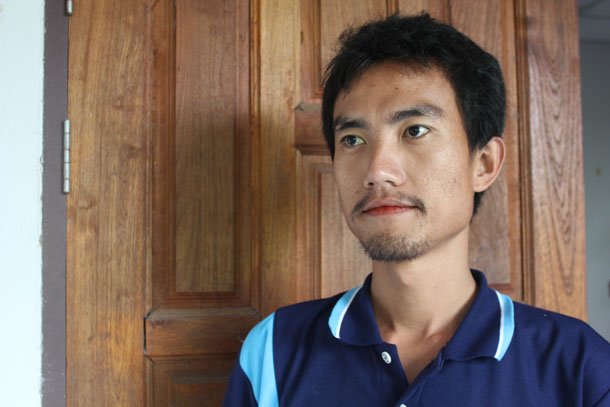

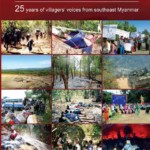
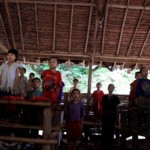
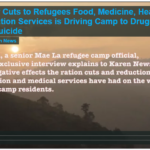
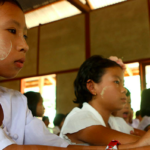
![‘We Would Like to Ask on Behalf of Refugee Youth to Recognise Refugee Camp [Education]’: Saw Say Moo, Karen Student Network Group (KSNG)](https://www.burmalink.org/wp-content/uploads/2017/06/Say-Moo-recognise-150x150.jpg)
Why is the international donor community abandoning Burma’s ethnic borderlands? We have heard over and over again how much of the aid that goes to central Burma is actually used by the government to expand their territory in ethnic areas (not to mention that it usually does not benefit ethnic people – on the contrary often has adverse effects on ethnic populations).
Why is the international donor community so reluctant to directly support ethnic organisations such as KED that are still often based in Thailand (for a good reason…)? Is it just because Burma is the new “trendy” place to direct funds to? If anyone has any thoughts please share.